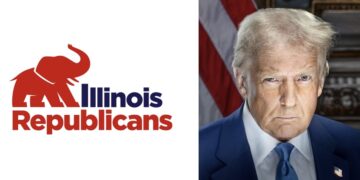By Nancy Thorner –
President Trump is the first president to stand up to Communist China in almost 50 years. Once known as "Red China' to distinguish the mainland regime from the anti-communist Chinese that fled to Taiwan in 1949, the Communist dictators have stolen America's intellectual property for decades.
This is the same tyrannical China against which millions of people on Hong Kong are protesting now.
As with a famous quip most often attributed to Mark Twain – Everybody talks about the weather, but nobody does anything about it — every one complains about China's abusive trade practices but nobody does anything about them, that is, until Donald J. Trump became president.
China exported a staggering amount of goods to the U.S. in 2018, totaling $539.5 billion, while allowing only $120.3 billion of American goods to be sold there. That created a record trade deficit of more than $400 billion.
China’s aim to dominate the globe
Charles Scaliger writes the following about China's New Aggression on the World Stage in the February 18, 2019 issue of The New America:
“The county aims to dominate the globe — as a communist power. At home China is not only presently retrenching socially — cracking down on and even disappearing anyone who appears to be dissident — but outwardly it is using the technology and wealth fed to it by companies clinging to the future hope that China will open its markets to them to build a sphere of world control. Undoing several decades of market reforms that began under premier Deng Xiaoping. Beginning in 2012, when Xi Jinping came to power, the Communist Party began a slow but steady movement back toward its totalitarian past."
“Whatever China's inward-looking past may have meant, 21st-century China is now (as imperial Japan once did) morphing into an aggressive, expansionist power with eyes set not merely on local domination but on challenging the might of the West across the globe. With the complicity of allegiance-less foreign corporations willing to be exploited in this design, China bids fair to accomplish its aims unless the United States and other Western countries retrench, recognize the growing threat, and cease giving aid and comfort to the most powerful and dangerous communist regime the world has yet seen.”
Trump officials chart new approach to China
Trump officials are making the case for a new approach to China that will outlast this administration. Myron Magnet, City Journal's Editor-at-Large and a National Humanities Medal laureate, on November 7, 2019, wrote about Secretary Pompeo as part of The Administration's First-String Team, in which he referred to remarks made by Pompeo from his Hudson Institute speech on China, October 29, 2019.
"Much as we like and admire the Chinese people," Pompeo warned, "and much as we want to be friends with their nation, we’ve been wrong about the People’s Republic for two decades and more. Partly that’s because the massive investment in China by U.S. companies has spawned a permanent class of China lobbyists, who “sell access to Chinese leaders and connect business partners,” and who, reinforced by a swarm of China “scholars, "have energetically misrepresented the true nature of the regime."
“What’s more, the limits that China places on visiting American journalists, academics, and diplomats, unlike the free access we give their Chinese counterparts here, allow them to see only the Potemkin China that the regime wishes to show, not the actual China “that doesn’t respect fairness, the rule of law, and reciprocity."
Now it’s time to “engage China as it is, not as we wish it were,” Pompeo announced. In reality, “the Chinese Communist Party is truly hostile to the United States and our values,” the secretary said. It’s “a Marxist-Leninist Party focused on struggle and international domination.” We were fooling ourselves in thinking that WTO membership would prompt the Chinese to play by international rules. Giving them such open access to our market allowed, as President Trump predicted early on, “the greatest theft job in history,” with Chinese companies, Pompeo explained, “weakening" America’s manufacturing base by conducting massive intellectual property theft”—though it has to be added that U.S. companies, focused on quarterly profits rather than long-term viability, were only too ready to turn over their most valuable trade secrets to required Chinese joint-venture partners in exchange for Chinese market access.
Since so much of this proprietary technology has military application, the quick compliance of U.S. executives sadly confirms Lenin’s grim quip that the capitalists will sell you the rope to hang them with. And indeed, Pompeo noted, now “China threatens America’s national security by developing asymmetric weapons that threaten our strategic assets too.” Clearly, the military “capabilities that China has built up . . . far exceed what they would need for their own self-defense.” When you add in China’s appropriation and militarization of the South China Sea, its planting of seedling Chinese naval bases westward across the Bay of Bengal and the Arabian Sea to Djibouti, you have to recognize, as Pompeo put it mildly, that Beijing is a “strategic competitor.”
Myron Magnet concludes his article with this thought, “It’s a relief to learn how fully the administration understands that our China problem goes far beyond the balance of trade and can by no means be solved by a Chinese promise to buy millions of bushels of soybeans from our farmers."







